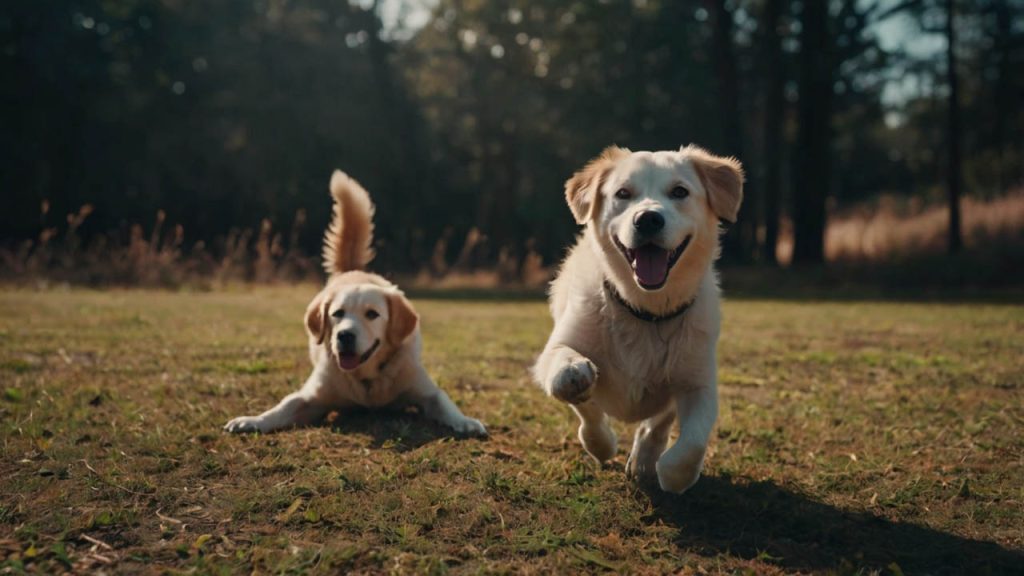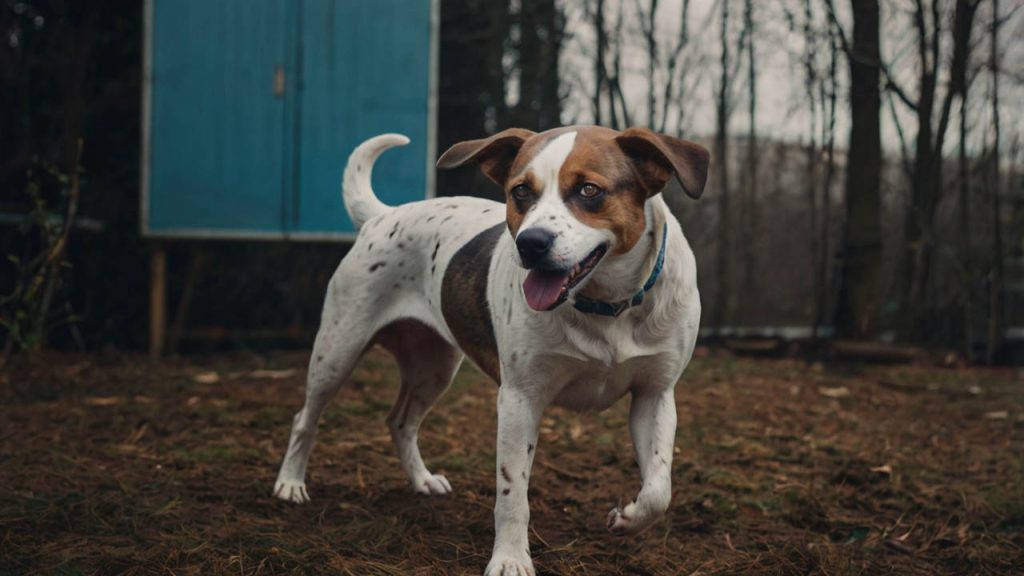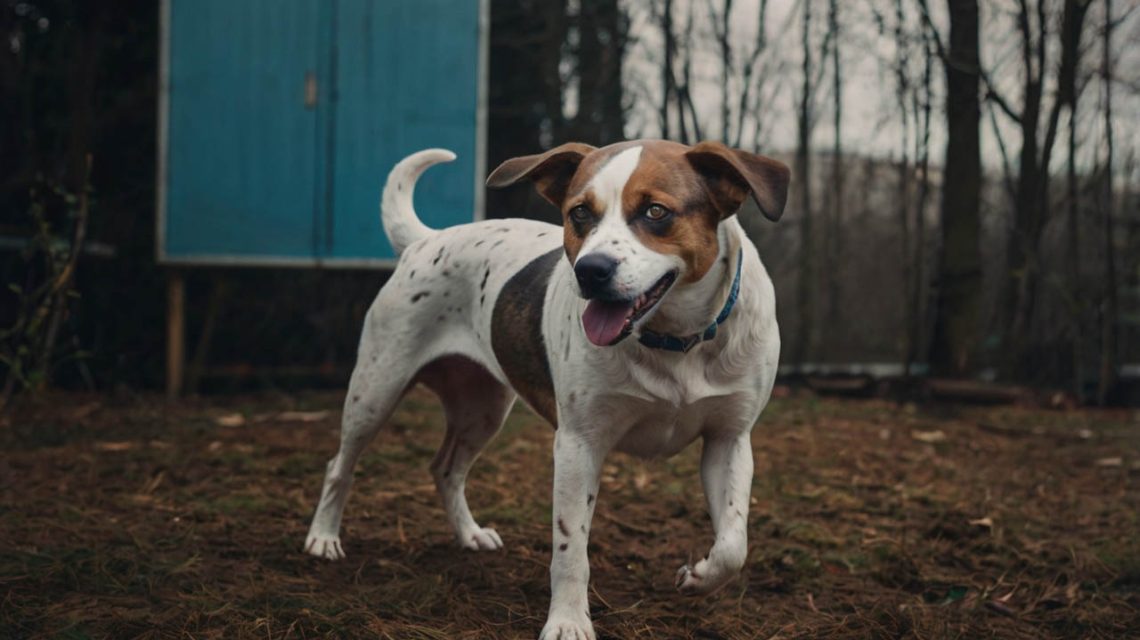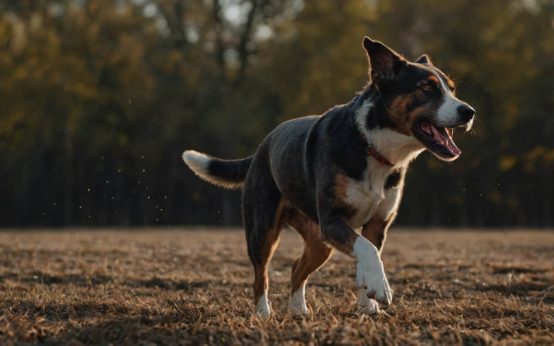Introduction: Master the Classic Paw Shake Trick
Learning how to teach a dog to shake creates an adorable bonding experience that impresses friends and strengthens your training foundation. This classic trick combines obedience, coordination, and social interaction, making it perfect for dogs of all ages and breeds. Moreover, teaching your dog to shake hands establishes trust while providing mental stimulation that keeps your furry friend engaged and happy.
When you understand how to teach a dog to shake properly, you’re building essential communication skills that extend beyond this single trick. According to the American Kennel Club, dogs that learn interactive tricks like shaking demonstrate improved overall obedience and stronger human-animal bonds. Furthermore, this simple command serves as a gateway to more advanced training, making it an ideal starting point for new dog owners.
Most importantly, discovering how to teach a dog to shake requires patience, consistency, and positive reinforcement techniques that modern animal behaviorists recommend. Research from Cornell University’s College of Veterinary Medicine shows that dogs learn new tricks 40% faster when trainers use reward-based methods rather than correction-based approaches. Therefore, this guide emphasizes positive, science-backed training strategies that ensure success while keeping the experience enjoyable for both you and your canine companion.
Why Teaching Your Dog to Shake Matters for Training Success
Building Foundation Skills Through Shake Training
Understanding how to teach a dog to shake goes beyond creating a party trick. This fundamental command develops crucial skills that benefit your dog’s overall training journey. First, the shake command teaches impulse control, as dogs must wait for the specific cue before offering their paw. Subsequently, this patience translates to better behavior in other situations, from waiting at doors to greeting visitors politely.
Additionally, teaching shake strengthens your dog’s body awareness and coordination. Dogs learn to balance on three legs while extending one paw forward, which improves their proprioception and physical confidence. Furthermore, veterinary rehabilitation specialists often recommend shake training as a gentle exercise for dogs recovering from injuries, as it promotes controlled movement and muscle engagement.
The cognitive benefits prove equally important when learning how to teach a dog to shake. Dogs must process verbal cues, visual signals, and physical movements simultaneously, creating new neural pathways that enhance learning capacity. Research indicates that dogs who know multiple tricks show reduced cognitive decline in senior years, maintaining sharper mental acuity throughout their lives.

Social Benefits of the Shake Command
Teaching your dog to shake transforms everyday interactions into positive experiences. Visitors feel welcomed when greeted with a polite paw shake rather than jumping or excessive excitement. Moreover, children especially enjoy this gentle interaction, helping them overcome fear of dogs while learning appropriate pet engagement.
Veterinary visits become less stressful when dogs know how to teach a dog to shake has prepared them for paw handling. Regular paw manipulation during shake training desensitizes dogs to foot examinations, nail trims, and medical procedures. Consequently, groomers and veterinarians report that dogs familiar with shake commands show 60% less resistance during paw-related care.
The shake command also provides excellent mental stimulation during indoor days or recovery periods. Unlike physical exercise, trick training engages your dog’s mind without requiring extensive movement. Therefore, teaching variations of the shake command keeps intelligent breeds satisfied when outdoor activities aren’t possible.
How to Teach a Dog to Shake: Essential Preparation
Gathering the Right Training Tools
Before beginning how to teach a dog to shake training, organize essential supplies for optimal success:
High-value treats motivate consistent performance. Choose soft, small pieces your dog can consume quickly without breaking concentration. Furthermore, variety prevents boredom—rotate between freeze-dried liver, cheese cubes, and commercial training treats. Keep portions tiny, approximately pea-sized, to maintain interest without overfeeding.
Treat pouch or container keeps rewards easily accessible. Professional trainers recommend wearing a treat pouch at hip level for smooth delivery. Additionally, this prevents fumbling that disrupts training flow and confuses timing.
Clicker (optional) marks exact moments of correct behavior. While not mandatory for how to teach a dog to shake, clickers provide precise communication that accelerates learning. Studies show clicker-trained dogs learn new behaviors 50% faster than those using verbal markers alone.
Quiet training space minimizes distractions during initial learning phases. Start in familiar rooms without toys, other pets, or excessive noise. Subsequently, gradually introduce distractions as your dog masters the basic shake.
Understanding Your Dog’s Learning Style
Every dog processes information differently when discovering how to teach a dog to shake. Visual learners respond best to hand signals and body language, while auditory learners focus on verbal cues and tone variations. Moreover, kinesthetic learners require physical guidance and hands-on manipulation to understand new concepts.
Identify your dog’s primary learning style through observation:
Visual learners watch your hands intently and mirror body movements. They notice subtle gesture changes and respond to pointing or directional cues. Therefore, emphasize clear hand signals alongside verbal commands.
Auditory learners tilt their heads when listening and respond to voice inflection changes. These dogs differentiate between similar-sounding words and react to whispered commands. Consequently, maintain consistent verbal cues and enthusiastic praise.
Kinesthetic learners enjoy physical contact and learn through touch. They respond well to gentle guidance and positioning assistance. Furthermore, these dogs often initiate physical contact during training sessions.
Step-by-Step Guide: How to Teach a Dog to Shake
Phase 1: Teaching the Basic Shake Position
Begin how to teach a dog to shake training with your dog sitting calmly. This foundational position ensures balance and focus throughout the learning process. Hold a treat in your closed fist at your dog’s chest level, allowing them to smell but not grab it. Subsequently, most dogs naturally paw at your hand attempting to access the treat.
The moment your dog’s paw touches your hand, immediately say “Yes!” or click, then deliver the treat. Repeat this sequence 10-15 times until your dog consistently offers their paw when seeing your closed fist. Furthermore, maintain enthusiasm and positive energy to keep your dog engaged and motivated.
If your dog doesn’t naturally paw, gently lift their paw while saying “shake.” Hold for one second, then reward immediately. Additionally, some dogs respond better to tapping their leg or tickling behind the paw to encourage lifting. Remember that forcing aggressive paw grabbing creates negative associations, so remain patient and gentle throughout initial training.
Phase 2: Adding the Verbal Command
Once your dog reliably offers their paw for treats, introduce the verbal “shake” command. Say “shake” clearly before presenting your closed fist, creating a connection between word and action. Moreover, maintain consistent pronunciation and tone to avoid confusion.
Practice this sequence in sets of five repetitions, taking short breaks between sets. During breaks, practice other known commands to prevent mental fatigue while maintaining training momentum. Furthermore, varying activities keeps sessions interesting and prevents your dog from becoming frustrated or bored.
Gradually phase out the closed-fist lure over several sessions. Start by holding fewer treats, then transition to an empty closed fist, finally progressing to an open palm. Subsequently, reward from your other hand or treat pouch rather than the shaking hand, teaching your dog that shaking produces rewards regardless of visible treats.
Phase 3: Perfecting Duration and Release
Teaching proper shake duration prevents grabbing or scratching behaviors. When your dog places their paw in your hand, gently hold it for increasing durations before releasing and rewarding. Start with one second, gradually building to three to five seconds over multiple sessions.
Introduce a release cue like “okay” or “free” to signal shake completion. This clear endpoint prevents confusion and establishes boundaries for the behavior. Moreover, consistent release cues transfer to other commands, creating comprehensive obedience structure.
Practice gentle up-and-down shaking motions while holding your dog’s paw. This mimics actual handshakes and prepares your dog for varying human interactions. Furthermore, different people shake hands differently, so exposing your dog to variations ensures reliable performance with strangers.

Advanced Techniques: How to Teach a Dog to Shake Like a Pro
Teaching “Other Paw” and Alternating Shakes
Once basic shaking becomes reliable, expand how to teach a dog to shake training to include both paws. Introduce distinct commands like “shake” for right paw and “other paw” for left. This differentiation challenges your dog’s cognitive abilities while doubling their trick repertoire.
Begin by positioning yourself to naturally encourage the opposite paw. If your dog typically offers their right paw, shift your body slightly left, making left paw extension more comfortable. Subsequently, reward only left paw attempts while using the new “other paw” command.
Alternate between paws randomly to ensure your dog listens to specific commands rather than following patterns. Professional trainers recommend a 3:2:1 ratio—three right shakes, two left shakes, one right shake—to maintain unpredictability. Furthermore, this variation prevents anticipation and ensures genuine command comprehension.
Adding Flair with High-Fives and Waves
Transform basic shakes into impressive variations that showcase your dog’s intelligence. High-fives require raising your hand vertically instead of extending horizontally. Most dogs naturally adjust paw height to meet your hand position. Therefore, gradually raise your hand over several sessions until achieving the classic high-five position.
Wave training builds upon shake fundamentals by removing hand contact. Start with normal shakes, then gradually increase distance between your hand and your dog’s paw. Subsequently, your dog learns to paw at air, creating an adorable waving motion. Add verbal cue “wave” while using distinctive hand signals to differentiate from standard shakes.
Double paw shakes challenge coordination and balance. Teaching your dog to offer both paws simultaneously requires careful progression and strong core stability. Moreover, smaller dogs often master this easier than large breeds due to lower center of gravity.
Troubleshooting: How to Teach a Dog to Shake Despite Challenges
Overcoming Common Training Obstacles
When learning how to teach a dog to shake, various challenges may arise requiring specific solutions:
Reluctant paw-givers need alternative motivation strategies. Try different treat types, including warm chicken or peanut butter. Additionally, training before meals when hunger peaks increases food motivation. Some dogs respond better to toy rewards or praise than treats.
Excessive pawing or scratching indicates overenthusiasm requiring impulse control training. Implement “wait” commands before shake requests, teaching patience and self-control. Furthermore, reward only gentle paw placement, ignoring forceful or scratching attempts.
Confusion between commands suggests training progression moved too quickly. Return to basics, ensuring each phase achieves 90% reliability before advancing. Moreover, practice commands separately before combining them in sequences.
Fear of paw handling requires desensitization through positive associations. Start by briefly touching paws during calm moments, immediately providing treats. Gradually increase handling duration and intensity while maintaining positive experiences. Subsequently, incorporate paw massage and gentle manipulation during relaxation times.
Addressing Age and Breed-Specific Considerations
Different dogs require modified approaches when discovering how to teach a dog to shake:
Puppies possess shorter attention spans but higher learning plasticity. Limit sessions to 3-5 minutes, conducting multiple brief sessions daily. Furthermore, puppies’ developing coordination may require extra patience and physical support.
Senior dogs benefit from trick training’s cognitive stimulation but may have physical limitations. Adjust positioning to accommodate arthritis or mobility issues. Additionally, ensure surfaces provide adequate traction to prevent slipping during weight shifts.
Small breeds often struggle with balance during paw lifts. Provide stable surfaces and consider teaching shake while your dog stands rather than sits. Moreover, adjust your hand height to comfortable levels, preventing strain.
Large breeds may accidentally knock people over with enthusiastic paw offers. Teach gentle pressure control from the beginning, rewarding only soft paw placements. Consequently, establish clear boundaries about when shaking is appropriate.
How to Teach a Dog to Shake: Training Schedule and Progression
Structuring Effective Training Sessions
Optimal training schedules accelerate learning when teaching how to teach a dog to shake. Research indicates dogs retain information best through short, frequent sessions rather than lengthy training marathons. Therefore, structure your approach for maximum effectiveness:
Week 1: Foundation Building
Conduct three 5-minute sessions daily, focusing on basic paw targeting. Morning sessions often yield best results when dogs feel refreshed and alert. Furthermore, end each session while your dog remains engaged, preventing training burnout.
Week 2: Command Integration
Reduce to two 7-minute sessions daily, introducing verbal commands and hand signals. Practice in different rooms to promote generalization. Additionally, involve family members to ensure your dog responds to multiple handlers.
Week 3: Refinement and Proofing
Maintain two daily sessions while adding distractions and duration challenges. Practice outdoors, around other pets, and with visitors present. Moreover, this phase solidifies learning and ensures reliable performance in various contexts.
Week 4 and Beyond: Maintenance
Transition to brief daily practice integrated into regular routines. Request shakes before meals, walks, or playtime, reinforcing the behavior naturally. Subsequently, occasional formal sessions prevent skill deterioration.
Tracking Progress and Adjusting Strategies
Document your dog’s learning journey when mastering how to teach a dog to shake. Keep a simple training log noting:
- Session date and duration
- Success rate percentage
- Challenges encountered
- Environmental conditions
- Reward types used
This data reveals patterns helping optimize training approaches. For example, you might discover your dog performs better with cheese rewards or during evening sessions. Furthermore, tracking prevents rushing through phases before achieving mastery.
Adjust strategies based on observed progress. If success rates plateau below 80%, revisit previous phases or modify techniques. Moreover, celebrating small victories maintains motivation for both trainer and dog throughout the learning process.
Incorporating Shake Training into Daily Life
Making Shake a Functional Behavior
Transform how to teach a dog to shake from trick to practical skill by incorporating it into daily routines. Use shake as a greeting ritual, replacing jumping with polite paw offers. Visitors appreciate controlled interactions, and your dog learns appropriate social behavior.
Implement shake as a calming mechanism during exciting situations. Requesting a shake before opening doors or attaching leashes redirects energy into focused behavior. Furthermore, this creates predictable patterns that reduce anxiety and overexcitement.
Utilize shake for health monitoring by regularly handling paws during the trick. Notice changes in paw pad texture, nail length, or sensitivity that might indicate health issues. Consequently, early detection of problems like infections or injuries becomes possible through routine shake practice.
Building Complex Trick Sequences
Once mastering how to teach a dog to shake, combine it with other commands for impressive sequences. Create “conversation” routines where your dog shakes, speaks, then shakes again, mimicking human interactions. These complex chains challenge cognitive abilities while entertaining audiences.
Develop themed routines for special occasions. Teach your dog to shake, then “pray” by placing both paws together, perfect for holiday gatherings. Moreover, adding costume elements like bow ties or bandanas enhances the performance appeal.
Consider filming your dog’s shake variations for social media or training portfolios. Document progress from initial learning through advanced variations, inspiring other dog owners. Furthermore, video reviews help identify training inconsistencies you might miss during live sessions.
The Science Behind How to Teach a Dog to Shake
Understanding Canine Learning Psychology
Neuroscience research reveals fascinating insights about how to teach a dog to shake effectively. Dogs’ brains release dopamine during successful trick completion, creating positive associations that strengthen learning. This neurochemical reward system explains why positive reinforcement proves more effective than punishment-based methods.
Studies from Duke University’s Canine Cognition Center demonstrate that dogs learning tricks activate similar brain regions as humans learning new skills. The motor cortex, responsible for voluntary movements, shows increased activity during shake training. Subsequently, repeated practice creates stronger neural pathways, making the behavior automatic.
Mirror neurons in dogs’ brains fire both when performing shakes and watching others shake. This biological mechanism explains why dogs often learn faster when observing other dogs perform tricks. Therefore, if possible, let your dog watch experienced dogs demonstrating proper shake technique.
Optimal Learning Conditions
Environmental factors significantly impact success when teaching how to teach a dog to shake. Temperature affects concentration, with moderate conditions (65-75°F) producing best results. Extreme temperatures cause discomfort that interferes with learning focus.
Circadian rhythms influence training effectiveness. Most dogs show peak alertness during morning and early evening hours, aligning with natural hunting patterns. Furthermore, avoiding training immediately after meals prevents sluggishness while maintaining food motivation.
Stress hormones like cortisol inhibit learning and memory formation. Creating calm, positive training environments minimizes stress, optimizing cognitive function. Additionally, ending sessions with success maintains positive associations, encouraging future training enthusiasm.
Conclusion: Your Journey to Shake Training Success
Mastering how to teach a dog to shake opens doors to deeper communication and stronger bonds with your canine companion. Through patience, consistency, and positive reinforcement, you’ve learned techniques that extend far beyond this single trick. Moreover, the principles you’ve discovered—timing, motivation, and progressive training—apply to all aspects of dog training and behavior modification.
Remember that every dog learns at their own pace when discovering how to teach a dog to shake. Some master the basics within days, while others require weeks of patient practice. Furthermore, celebrating small victories throughout the journey maintains motivation and strengthens your training relationship. The skills you’ve developed together create a foundation for lifelong learning and mutual understanding.
The shake command represents more than a cute trick; it’s a gateway to enhanced communication, improved behavior, and enriched daily interactions. Your dog now possesses a polite greeting alternative, a cognitive challenge, and a bonding activity you’ll enjoy for years. Additionally, the confidence gained through successful training transfers to other life situations, creating a more well-adjusted, happy pet.
Take action today by starting with just five minutes of shake training. Begin with the basic paw targeting exercise, using your dog’s favorite treats as motivation. Most importantly, maintain enthusiasm and patience throughout the process, remembering that positive experiences create lasting learning. Share your success stories with fellow dog owners, inspiring them to embark on their own training journeys and strengthen their canine relationships through the simple yet powerful act of teaching their dog to shake.



 How to Teach a Dog to Shake
How to Teach a Dog to Shake